The history of Hornstrandir nature reserve in IcelandHornstrandir nature reserve is a unique place in the world, so special is its history. Today, humans no longer live in the region, which has reverted to complete wilderness. It is home to rare plants endemic to Iceland, millions of birds, Arctic Fox and an incredibly rich fauna. But it wasn’t always this way. The region was declared a nature reserve in 1975. Before that, in ancient times, humans lived in Hornstrandir, hunting and farming. At its peak, Hornstrandir had a population of 500, which is hard to imagine today. This is the story we’re going to tell you.
Life in Hornstrandir during the last century
Before the Second World War, life in Iceland was very difficult. The extreme climate, disease and natural disasters such as volcanoes and avalanches did not spare the Icelandic population. But if life was difficult on the island, it was even more so at Hornstrandir. The peninsula is a rampart that protects Iceland’s Westfjords from the wind. Winter lasts from September to May and conditions are extreme. This is why humans simply resigned themselves to leaving the region and settling in Ísafjörður, the nearest large village, for some, and in Reykjavik or Akureyri, the country’s major cities, for others.
So, humans lived in the Hornstrandir nature reserve and defied nature. Farms have been built, sheep have been brought to the island, men and women have hunted birds and eggs, bred sheep and farmed. Potatoes and rutabaga were once grown on the reserve.
Life at Hornstrandir was also a real challenge. Every year, food had to be stored for the winter, fish had to be dried, sheep meat had to be salted and the few vegetables had to be preserved. During the summer, restoration work was also carried out. A few kilometres from the Arctic Circle, in this region exposed to winds and bad weather, buildings deteriorate rapidly and maintenance was annual.
The former inhabitants of Hornstrandir
What if it all began with the eruption of the Laki volcano in 1783/1784?
Icelanders are well aware of this date, when the volcano erupted and caused a real tragedy on the island. It is estimated that almost 10,000 people died as a result of this natural disaster. For several years, the population fled the south of the country and its toxic air. Hornstrandir was located on the opposite side of the island from the Katla volcano, providing a refuge for the population. This is how some families settled on the peninsula during this period.
What’s more, the predominantly south-easterly winds carried toxic ash and steam towards Europe. The fauna, flora and people of Hornstrandir were therefore spared.
Not many French people know this, but some historians mention the Laki volcano as one of the major factors contributing to the start of the French Revolution. Because of this volcano, which caused a year of winter and famine, the people of Europe suffered a great famine.
Laki volcano certainly favoured the settlement of men and women in the Hornstrandir reserve. But it was above all the richness of the fauna that was seen as an opportunity and which attracted many families in search of an El Dorado.
Finally, the fate of the inhabitants of Hornstrandir is closely linked to the arrival of the British army in Iceland at the start of the Second World War.
While options were few, unemployment high and life difficult, the British created opportunities that the Icelanders were able to seize. Construction of buildings, roads and airfields, flourishing trade… there were plenty of reasons for Icelanders to migrate to the cities where the British settled. This is how the Westfjords emptied of their population, who went to work in Reykjavik and Keflavik.
The village of Hesteyri
Hesteyri was the largest village in Hornstrandir. Other important villages in the region were located in Látrar and Sæból. It should be noted that the three locations of these villages are the most protected in Hornstrandir.
Hesteyri has seen great times. The old whaling station, built in 1894, was transformed into a Harrang factory. The inhabitants of Hesteyri worked in this factory until the world crisis of 1929. From then on, conditions began to deteriorate until the Second World War, when the factory was abandoned.
After the Second World War, there were plenty of job opportunities in the larger towns and villages. Thus the population of Hornstrandir began its exile to Ísafjörður or Reykjavík.
In 1889, a church was built in Hesteyri by the Norwegians. This church was donated to the people of Hesteyri. Incredibly, in 1962, almost 10 years after the village of Hesteyri was abandoned, the church was recovered and moved to the village of Súðavík, 20 km south of Ísafjörður. Today, a monument built next to the Hesteyri cemetery reminds hikers and visitors of the history of the Church of Hesteyri.
Today, nine houses still stand in Hesteyri, including the former doctor’s house, which has become an inn and restaurant during the few summer months. The same is true of the former shop (Búðin), which is now a holiday house. The other houses are family properties and are also used as holiday houses.
The farm of Hornvik
Today, Hornvik is known for its breathtaking cliffs and scenery and its large population of polar foxes. But in the past, it was a peaceful place where a small community lived on Horn’s farm. The bay faces north. Living conditions were therefore the most difficult in Iceland. But that didn’t stop families from living there and farming and hunting.
The closest neighbours to Horn’s farm lived in Látravík. They were separated by the Hornbjarg cliffs and a distance of around 7 kilometres.
Stígur and Jóna, and their 15-year-old son, were the last people to live in Hornvik. They left the bay in 1948 when Stígur fell ill and was no longer able to work on the farm.
Kvíar farm
Kvíar was the largest farm in Hornstrandir nature reserve. Located between the fjords of Veiðileysufjörður and Lónafjörður. Its concrete construction is recent. The farm was built in 1923 by Jón Jakobsson. The site contains ruins that give a glimpse of the old farmhouse, a peat construction,
Kvíar Farm is a true human achievement. Today, it is unimaginable to transport the necessary materials to such a remote location. The owners, who were well known for their boat-building skills, had even installed wind turbines to provide a radio link and the opportunity to recharge batteries. This radio link was the only means of communication in the region.
Hornstrandir’s other old farms
Other farms existed here and there in the region of Hornstrandir. In addition to the villages of Hesteyri, Látrar and Sæból, there was a farm at Hornvik, one at Kvíar, one at Hælavík, one at Búðir in the bay of Hlöðuvík, and more ancient ones in the fjord of Veiðileysufjörður.
It should be noted that some Icelanders lived in Aðalvík until 1962. This small population remained in Hornstrandir to work at the American air base in Straumnes.
Wildlife of Hornstrandir nature reserve
Hornstrandir is a unique place! Nature here is wild and unspoilt. The reserve is a refuge for millions of seabirds and tundra birds. In summer, the cliffs, fjords and bays teem with life. Rivers, formed by rain, melting snow and the Drangajökull glacier, wind their way through breathtaking landscapes, sometimes ending in cascades and waterfalls.
Hornstrandir is above all known for its foxes. When it comes to observing and photographing Arctic Fox, this region has no equal. Hornvik Bay even has the highest density of Arctic Fox in the world! We’re lucky enough to work in the reserve, and every year we see what a paradise Hornstrandir is for this little canid, which is threatened throughout the Arctic, but protected in the reserve.
Finally, there is no shortage of marine mammals in Hornstrandir nature reserve. From the coast, you can observe harbour seals, humpback whales, minke whales and orcas. All you have to do is keep your eyes peeled for the flippers, the blowing of the whales and the little heads of curious seals that often come to say hello.
The Norwegian whaling station at Hesteyri
In 1894, the Norwegian company Brodrene Bull obtained a lease to build a whaling station at Stekkeyr, about 2 km from the village of Hesteyri. The villagers had no say in the matter, as the process was legal.
As well as the factory, the company built houses for the workers and the boss, a workshop and a wharf.
In 1924, the Icelanders transformed the whaling station into a harrang factory. The Norwegians had left for the east of the country at the beginning of the century to carry out the same activity.
Finally, the outbreak of the Second World War sounded the death knell for the factory, which was abandoned before being taken over by the state in the early 1950s.
Today, the Hesteyri whaling station is a ruin of red brick and concrete. But the old chimney is still standing and is a source of curiosity for visitors. In winter, it serves as a shelter for Arctic Foxes. Nothing is ever lost!
Straumnes Air Station
Straumnes Air Station (also known as Látrar) is an American air station built in 1953 on the cliffs of Straumnes. It was used by the US Army for only 4 years before being abandoned for financial reasons, as the operating costs were too high.
The Látrar military station was built against the backdrop of the Cold War. Soviet aircraft were flying along the northern coast of Europe, which led the United States to secure the area, and Iceland was the perfect place to install surveillance radars.
The role of this station was purely to detect and inform. Another military base, located in the town of Keflavik to the south-west, was responsible for intervening.
Since then, the Straumnes air station has been cleaned up and the derelict buildings have become a tourist attraction. Access remains difficult, but there are magnificent views over the bays of Aðalvík and Fljótavík. On a clear day, you can even see Greenland, less than 300km north-west of Straumnes.
Activities in Hornstrandir
Although the village of Hesteyri is now uninhabited and deserted in winter, it has become the main access point to the Hornstrandir nature reserve in summer. The local tourist industry offers a wide range of activities for all ages.
Our photo tours
Our Arctic fox photo tour takes place every year in Hornstrandir nature reserve. We have chosen to take our participants to the north of the reserve, where there are very few humans. We know the area like the back of our hand, the polar fox territories and the burrows, and for 8 days we organise working groups and take participants to meet the polar fox and the other animals in the reserve.
Trekking in Hornstrandir
Trekking is certainly the number one activity in Hornstrandir nature reserve. That said, this activity is not accessible to everyone. Conditions are extreme, and even in summer, storms are not uncommon. Trekking in Hornstrandir is therefore reserved for experienced hikers who are used to trekking independently in cold, wet regions.
You should also know that it is forbidden to bivouac outside the camps at Hornstrandir. There is one camp per fjord or bay, with the exception of Hornvik where two bivouac sites have been set up. It is therefore important to calculate your itinerary carefully so that you always end your days in a camp.
Le kayaking à Hornstrandir
Some tourism companies offer kayaking in Hornstrandir’s fjords and bays. It’s not the most common activity but kayaking enthusiasts can enjoy the reserve’s landscapes from the ocean.
A walk in Hesteyri
Most people who visit Hornstrandir in summer are content with a short stroll to Hesteyri. You can take a short walk in the fjord, visit the old whaling station and enjoy a rhubarb tart, the speciality of the guest house now located in the doctor’s house.
Hornstrandir nature reserve is a unique place in the world, so special is its history. Today, humans no longer live in the region, which has reverted to complete wilderness. It is home to rare plants endemic to Iceland, millions of birds, Arctic Fox and an incredibly rich fauna. But it wasn’t always this way. The region was declared a nature reserve in 1975. Before that, in ancient times, humans lived in Hornstrandir, hunting and farming. At its peak, Hornstrandir had a population of 500, which is hard to imagine today. This is the story we’re going to tell you.
Life in Hornstrandir during the last century
Before the Second World War, life in Iceland was very difficult. The extreme climate, disease and natural disasters such as volcanoes and avalanches did not spare the Icelandic population. But if life was difficult on the island, it was even more so at Hornstrandir. The peninsula is a rampart that protects Iceland’s Westfjords from the wind. Winter lasts from September to May and conditions are extreme. This is why humans simply resigned themselves to leaving the region and settling in Ísafjörður, the nearest large village, for some, and in Reykjavik or Akureyri, the country’s major cities, for others.
So, humans lived in the Hornstrandir nature reserve and defied nature. Farms have been built, sheep have been brought to the island, men and women have hunted birds and eggs, bred sheep and farmed. Potatoes and rutabaga were once grown on the reserve.
Life at Hornstrandir was also a real challenge. Every year, food had to be stored for the winter, fish had to be dried, sheep meat had to be salted and the few vegetables had to be preserved. During the summer, restoration work was also carried out. A few kilometres from the Arctic Circle, in this region exposed to winds and bad weather, buildings deteriorate rapidly and maintenance was annual.
The former inhabitants of Hornstrandir
What if it all began with the eruption of the Laki volcano in 1783/1784?
Icelanders are well aware of this date, when the volcano erupted and caused a real tragedy on the island. It is estimated that almost 10,000 people died as a result of this natural disaster. For several years, the population fled the south of the country and its toxic air. Hornstrandir was located on the opposite side of the island from the Katla volcano, providing a refuge for the population. This is how some families settled on the peninsula during this period.
What’s more, the predominantly south-easterly winds carried toxic ash and steam towards Europe. The fauna, flora and people of Hornstrandir were therefore spared.
Not many French people know this, but some historians mention the Laki volcano as one of the major factors contributing to the start of the French Revolution. Because of this volcano, which caused a year of winter and famine, the people of Europe suffered a great famine.
Laki volcano certainly favoured the settlement of men and women in the Hornstrandir reserve. But it was above all the richness of the fauna that was seen as an opportunity and which attracted many families in search of an El Dorado.
Finally, the fate of the inhabitants of Hornstrandir is closely linked to the arrival of the British army in Iceland at the start of the Second World War.
While options were few, unemployment high and life difficult, the British created opportunities that the Icelanders were able to seize. Construction of buildings, roads and airfields, flourishing trade… there were plenty of reasons for Icelanders to migrate to the cities where the British settled. This is how the Westfjords emptied of their population, who went to work in Reykjavik and Keflavik.
The village of Hesteyri
Hesteyri was the largest village in Hornstrandir. Other important villages in the region were located in Látrar and Sæból. It should be noted that the three locations of these villages are the most protected in Hornstrandir.
Hesteyri has seen great times. The old whaling station, built in 1894, was transformed into a Harrang factory. The inhabitants of Hesteyri worked in this factory until the world crisis of 1929. From then on, conditions began to deteriorate until the Second World War, when the factory was abandoned.
After the Second World War, there were plenty of job opportunities in the larger towns and villages. Thus the population of Hornstrandir began its exile to Ísafjörður or Reykjavík.
In 1889, a church was built in Hesteyri by the Norwegians. This church was donated to the people of Hesteyri. Incredibly, in 1962, almost 10 years after the village of Hesteyri was abandoned, the church was recovered and moved to the village of Súðavík, 20 km south of Ísafjörður. Today, a monument built next to the Hesteyri cemetery reminds hikers and visitors of the history of the Church of Hesteyri.
Today, nine houses still stand in Hesteyri, including the former doctor’s house, which has become an inn and restaurant during the few summer months. The same is true of the former shop (Búðin), which is now a holiday house. The other houses are family properties and are also used as holiday houses.
The farm of Hornvik
Today, Hornvik is known for its breathtaking cliffs and scenery and its large population of polar foxes. But in the past, it was a peaceful place where a small community lived on Horn’s farm. The bay faces north. Living conditions were therefore the most difficult in Iceland. But that didn’t stop families from living there and farming and hunting.
The closest neighbours to Horn’s farm lived in Látravík. They were separated by the Hornbjarg cliffs and a distance of around 7 kilometres.
Stígur and Jóna, and their 15-year-old son, were the last people to live in Hornvik. They left the bay in 1948 when Stígur fell ill and was no longer able to work on the farm.
Kvíar farm
Kvíar was the largest farm in Hornstrandir nature reserve. Located between the fjords of Veiðileysufjörður and Lónafjörður. Its concrete construction is recent. The farm was built in 1923 by Jón Jakobsson. The site contains ruins that give a glimpse of the old farmhouse, a peat construction,
Kvíar Farm is a true human achievement. Today, it is unimaginable to transport the necessary materials to such a remote location. The owners, who were well known for their boat-building skills, had even installed wind turbines to provide a radio link and the opportunity to recharge batteries. This radio link was the only means of communication in the region.
Hornstrandir’s other old farms
Other farms existed here and there in the region of Hornstrandir. In addition to the villages of Hesteyri, Látrar and Sæból, there was a farm at Hornvik, one at Kvíar, one at Hælavík, one at Búðir in the bay of Hlöðuvík, and more ancient ones in the fjord of Veiðileysufjörður.
It should be noted that some Icelanders lived in Aðalvík until 1962. This small population remained in Hornstrandir to work at the American air base in Straumnes.
Wildlife of Hornstrandir nature reserve
Hornstrandir is a unique place! Nature here is wild and unspoilt. The reserve is a refuge for millions of seabirds and tundra birds. In summer, the cliffs, fjords and bays teem with life. Rivers, formed by rain, melting snow and the Drangajökull glacier, wind their way through breathtaking landscapes, sometimes ending in cascades and waterfalls.
Hornstrandir is above all known for its foxes. When it comes to observing and photographing Arctic Fox, this region has no equal. Hornvik Bay even has the highest density of Arctic Fox in the world! We’re lucky enough to work in the reserve, and every year we see what a paradise Hornstrandir is for this little canid, which is threatened throughout the Arctic, but protected in the reserve.
Finally, there is no shortage of marine mammals in Hornstrandir nature reserve. From the coast, you can observe harbour seals, humpback whales, minke whales and orcas. All you have to do is keep your eyes peeled for the flippers, the blowing of the whales and the little heads of curious seals that often come to say hello.
The Norwegian whaling station at Hesteyri
In 1894, the Norwegian company Brodrene Bull obtained a lease to build a whaling station at Stekkeyr, about 2 km from the village of Hesteyri. The villagers had no say in the matter, as the process was legal.
As well as the factory, the company built houses for the workers and the boss, a workshop and a wharf.
In 1924, the Icelanders transformed the whaling station into a harrang factory. The Norwegians had left for the east of the country at the beginning of the century to carry out the same activity.
Finally, the outbreak of the Second World War sounded the death knell for the factory, which was abandoned before being taken over by the state in the early 1950s.
Today, the Hesteyri whaling station is a ruin of red brick and concrete. But the old chimney is still standing and is a source of curiosity for visitors. In winter, it serves as a shelter for Arctic Foxes. Nothing is ever lost!
Straumnes Air Station
Straumnes Air Station (also known as Látrar) is an American air station built in 1953 on the cliffs of Straumnes. It was used by the US Army for only 4 years before being abandoned for financial reasons, as the operating costs were too high.
The Látrar military station was built against the backdrop of the Cold War. Soviet aircraft were flying along the northern coast of Europe, which led the United States to secure the area, and Iceland was the perfect place to install surveillance radars.
The role of this station was purely to detect and inform. Another military base, located in the town of Keflavik to the south-west, was responsible for intervening.
Since then, the Straumnes air station has been cleaned up and the derelict buildings have become a tourist attraction. Access remains difficult, but there are magnificent views over the bays of Aðalvík and Fljótavík. On a clear day, you can even see Greenland, less than 300km north-west of Straumnes.
Activities in Hornstrandir
Although the village of Hesteyri is now uninhabited and deserted in winter, it has become the main access point to the Hornstrandir nature reserve in summer. The local tourist industry offers a wide range of activities for all ages.
Our photo tours
Our Arctic fox photo tour takes place every year in Hornstrandir nature reserve. We have chosen to take our participants to the north of the reserve, where there are very few humans. We know the area like the back of our hand, the polar fox territories and the burrows, and for 8 days we organise working groups and take participants to meet the polar fox and the other animals in the reserve.
Trekking in Hornstrandir
Trekking is certainly the number one activity in Hornstrandir nature reserve. That said, this activity is not accessible to everyone. Conditions are extreme, and even in summer, storms are not uncommon. Trekking in Hornstrandir is therefore reserved for experienced hikers who are used to trekking independently in cold, wet regions.
You should also know that it is forbidden to bivouac outside the camps at Hornstrandir. There is one camp per fjord or bay, with the exception of Hornvik where two bivouac sites have been set up. It is therefore important to calculate your itinerary carefully so that you always end your days in a camp.
Le kayaking à Hornstrandir
Some tourism companies offer kayaking in Hornstrandir’s fjords and bays. It’s not the most common activity but kayaking enthusiasts can enjoy the reserve’s landscapes from the ocean.
A walk in Hesteyri
Most people who visit Hornstrandir in summer are content with a short stroll to Hesteyri. You can take a short walk in the fjord, visit the old whaling station and enjoy a rhubarb tart, the speciality of the guest house now located in the doctor’s house.

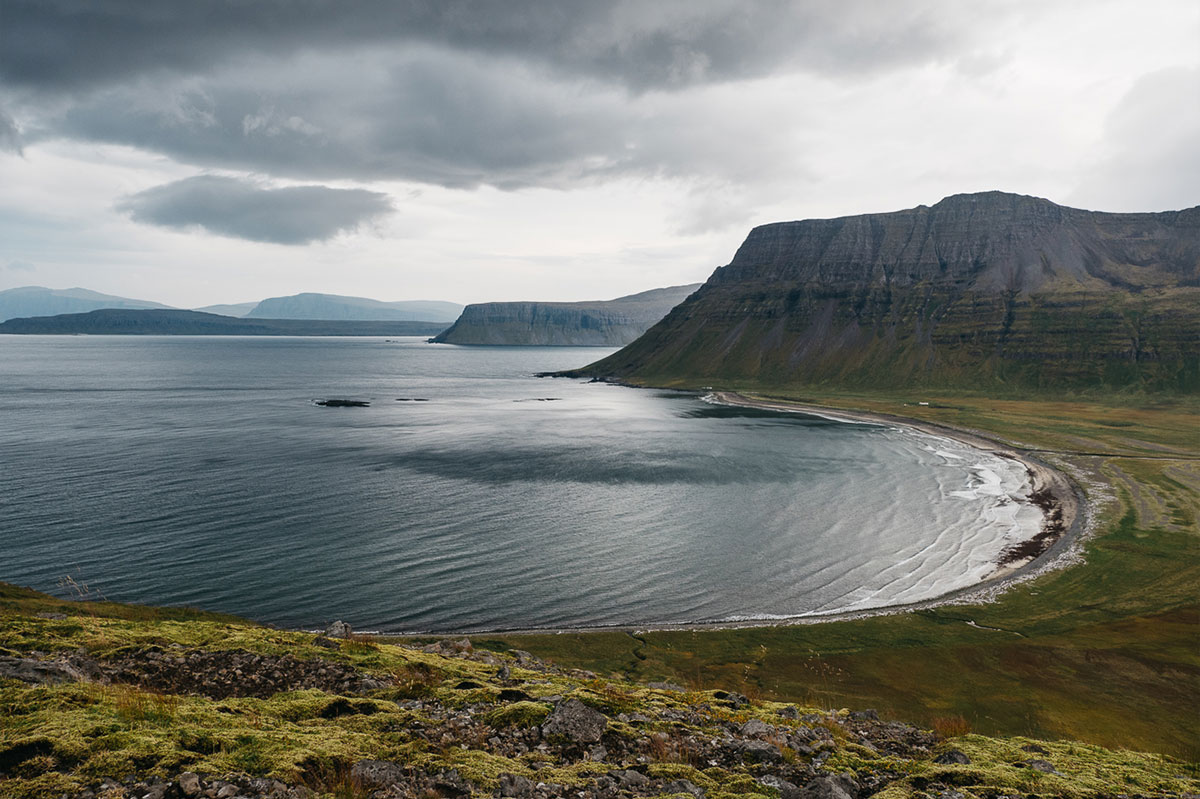
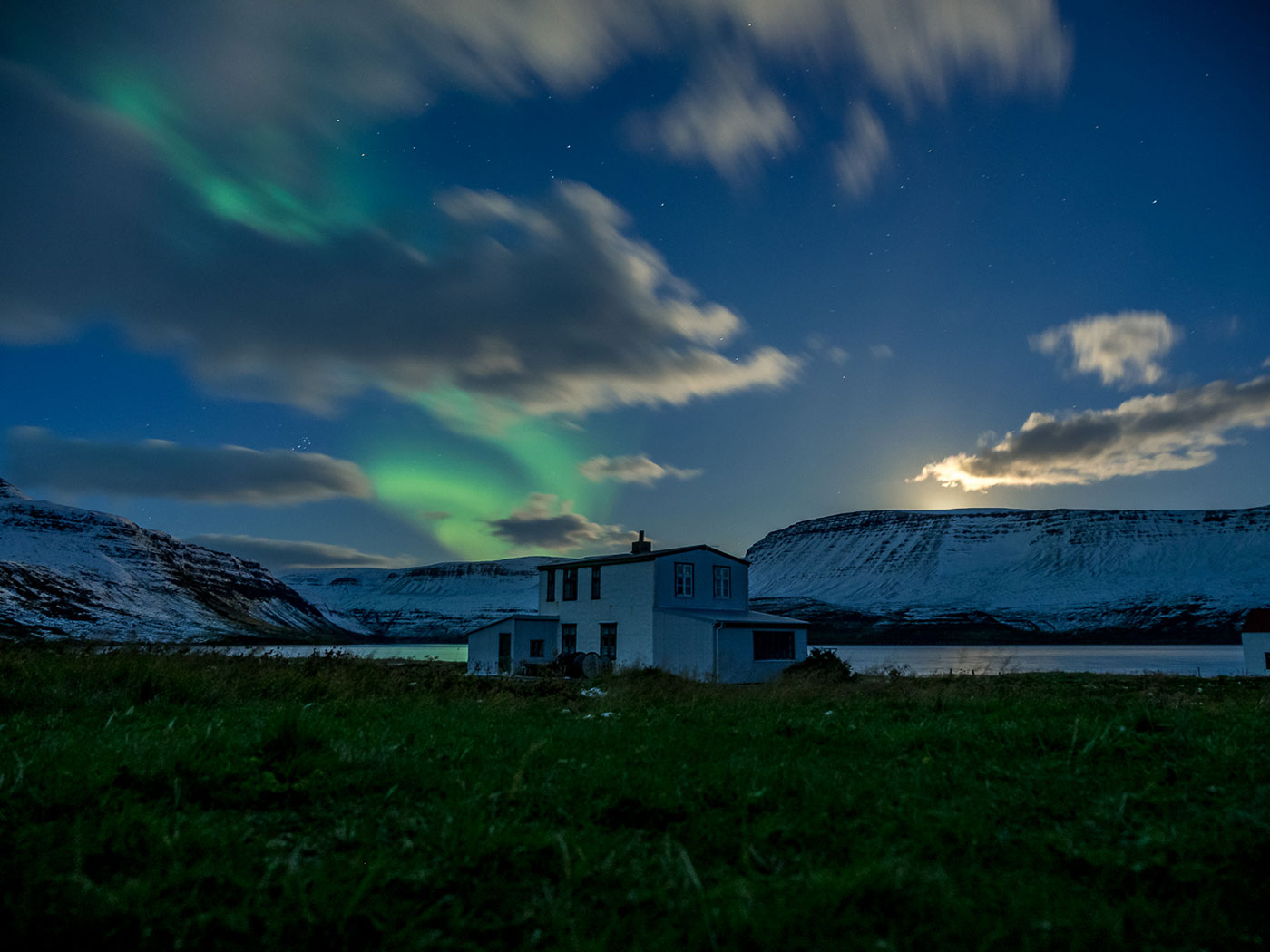

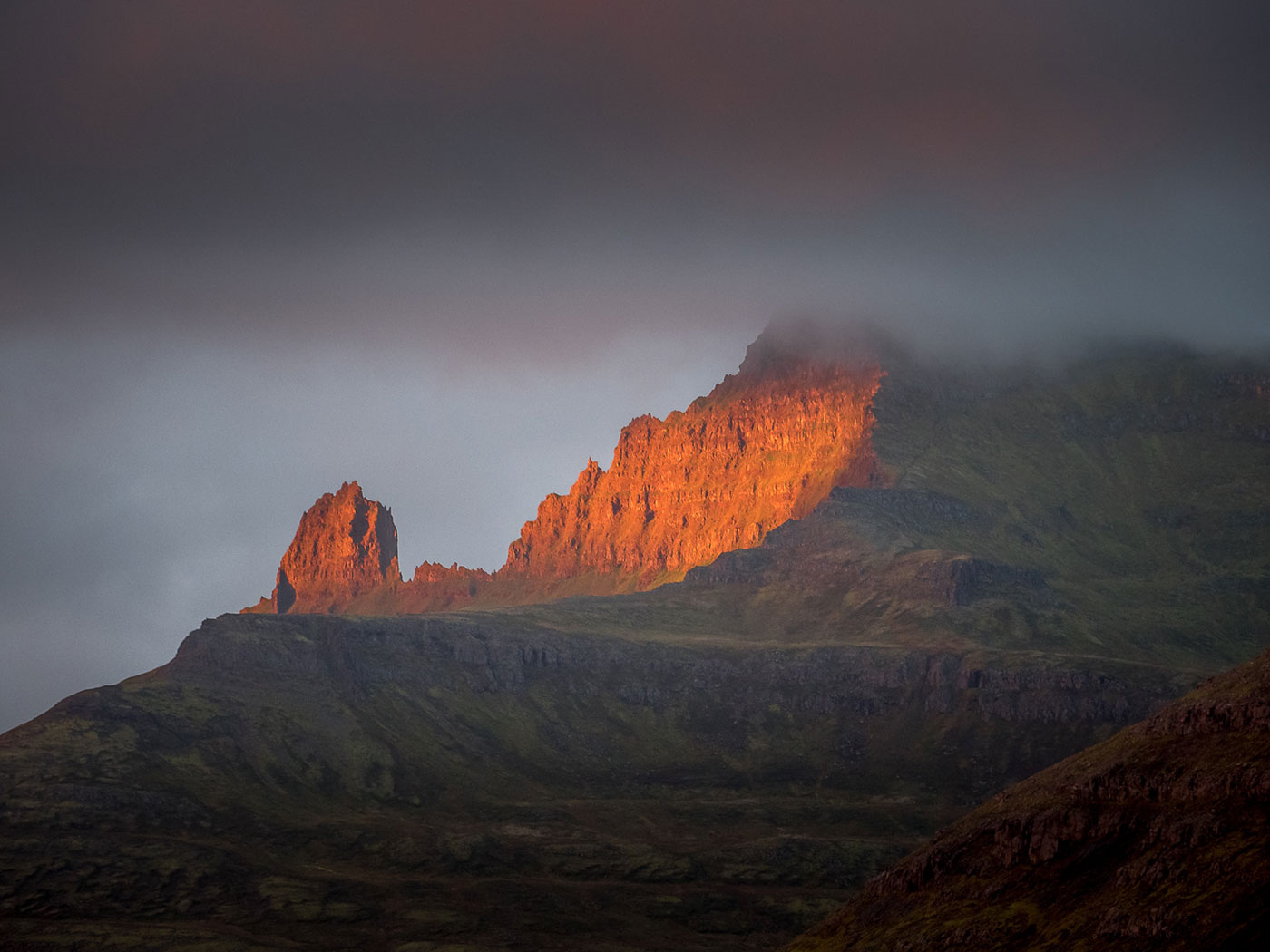
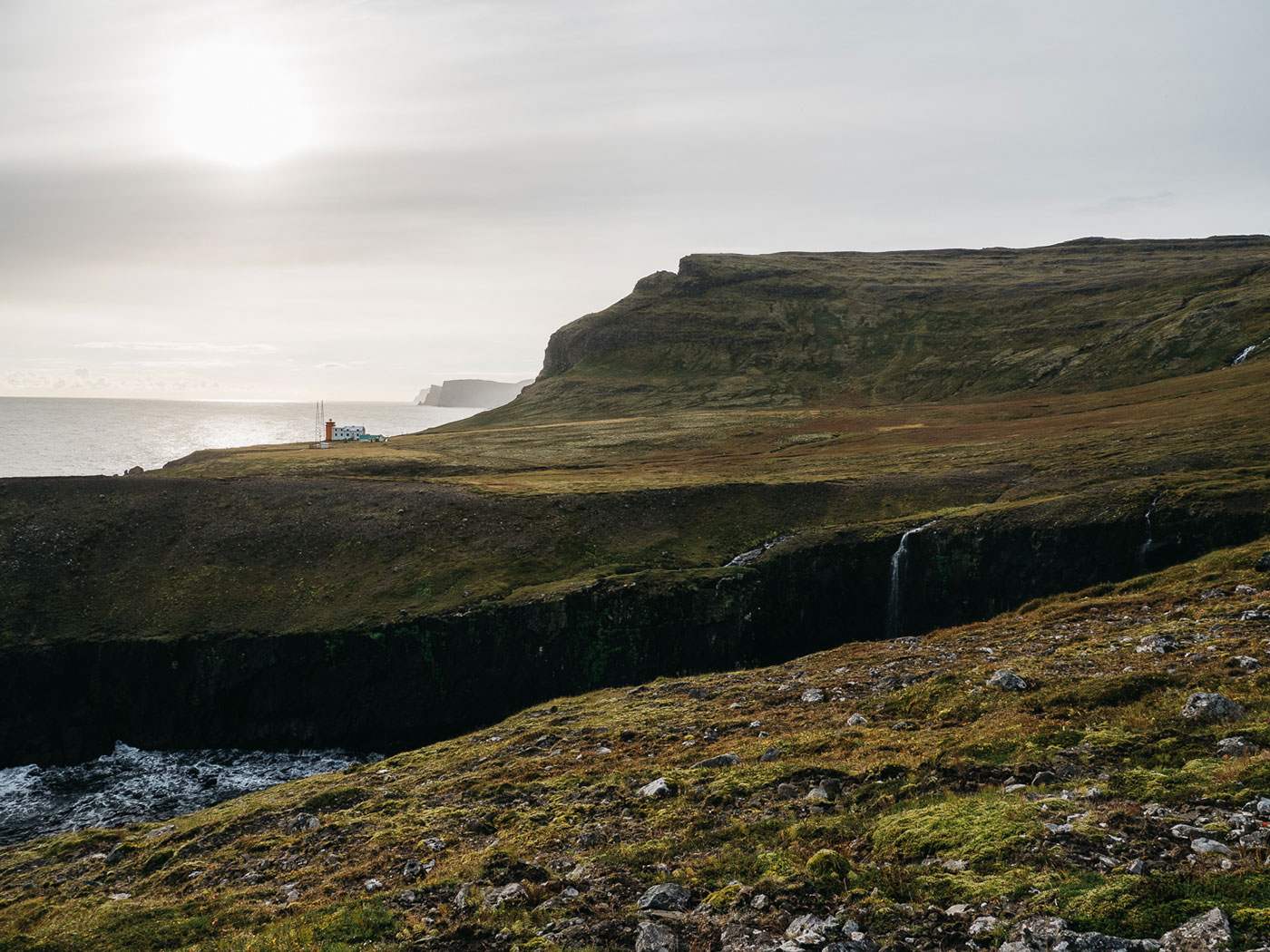
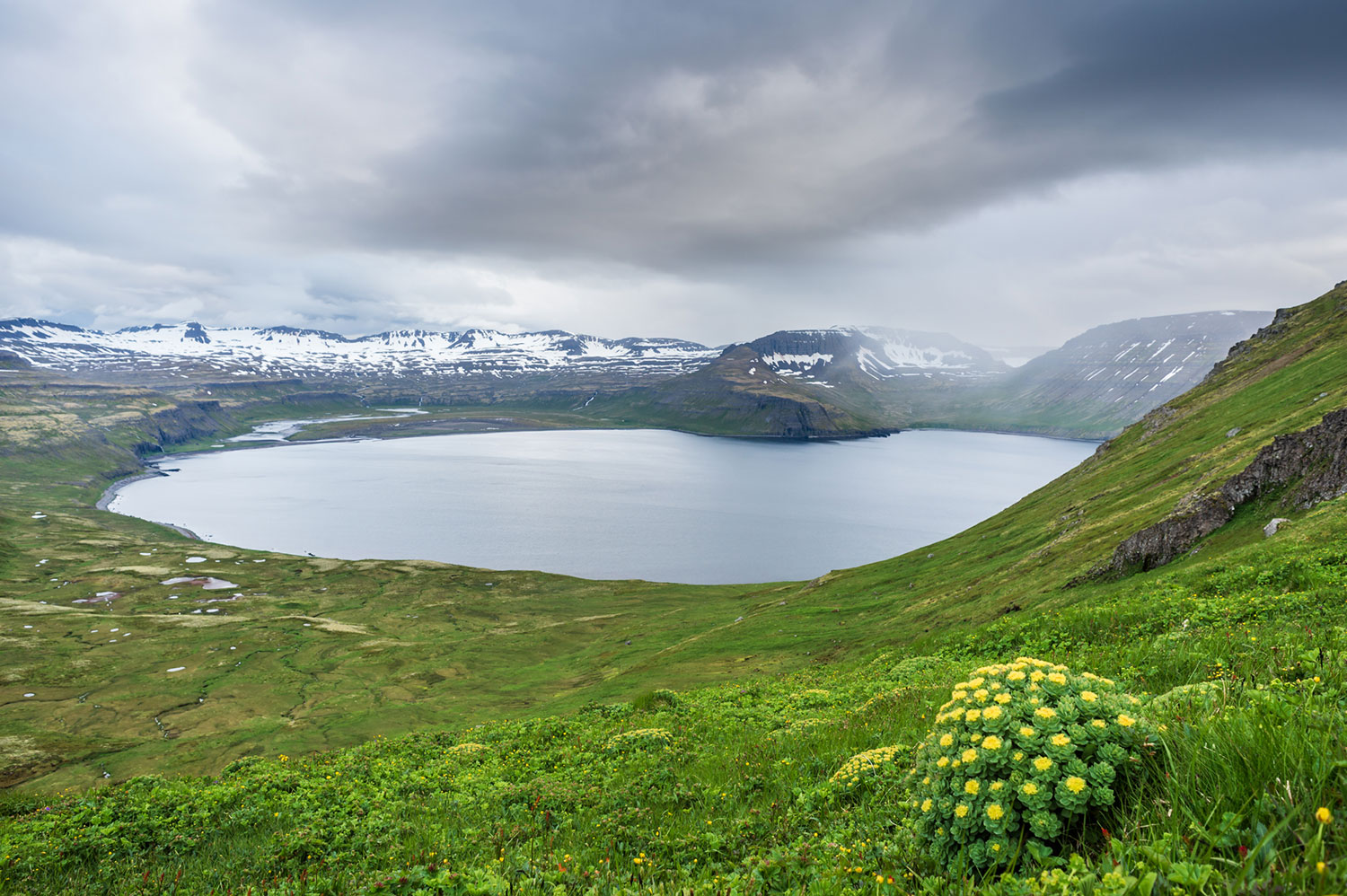
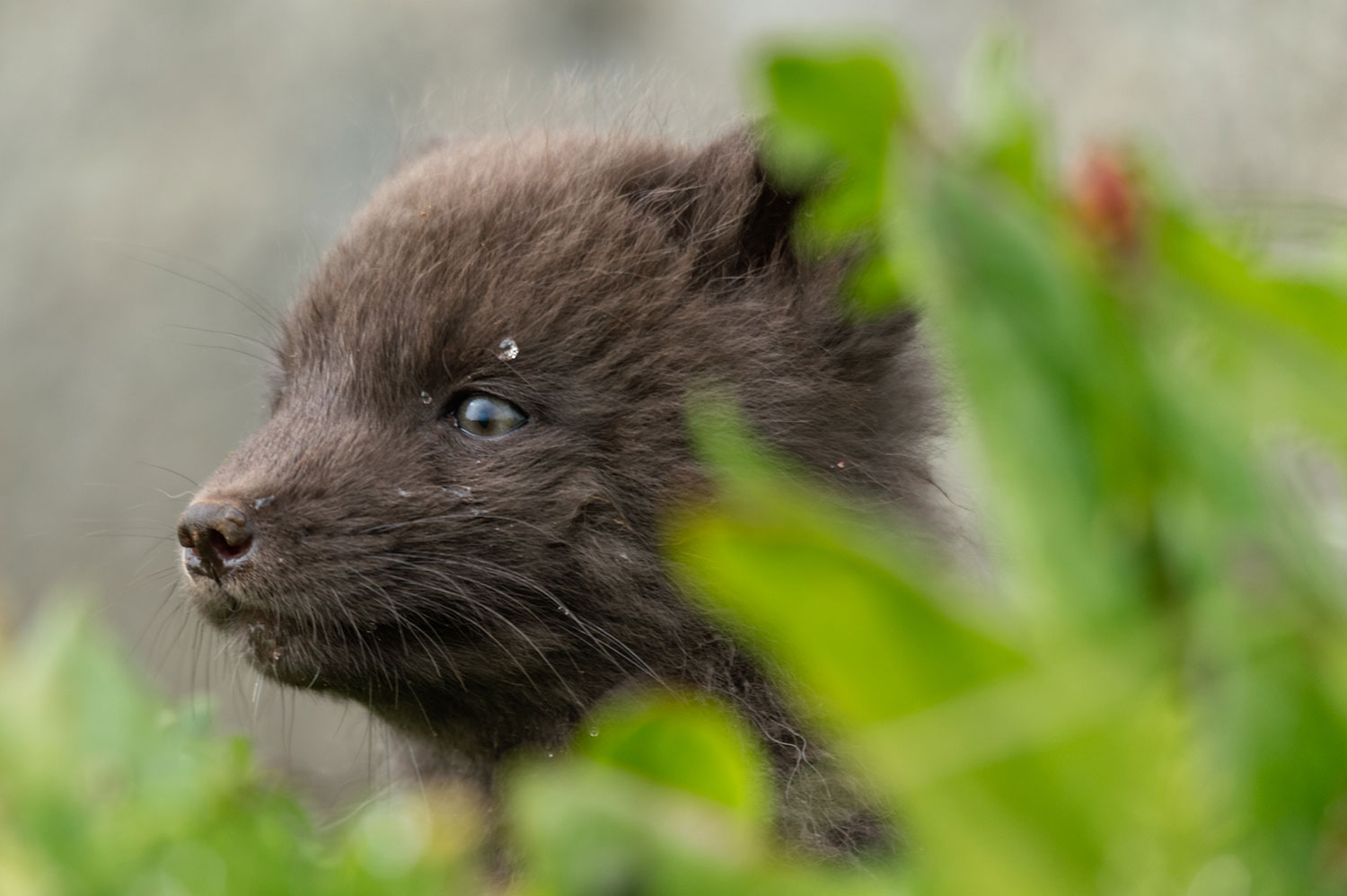
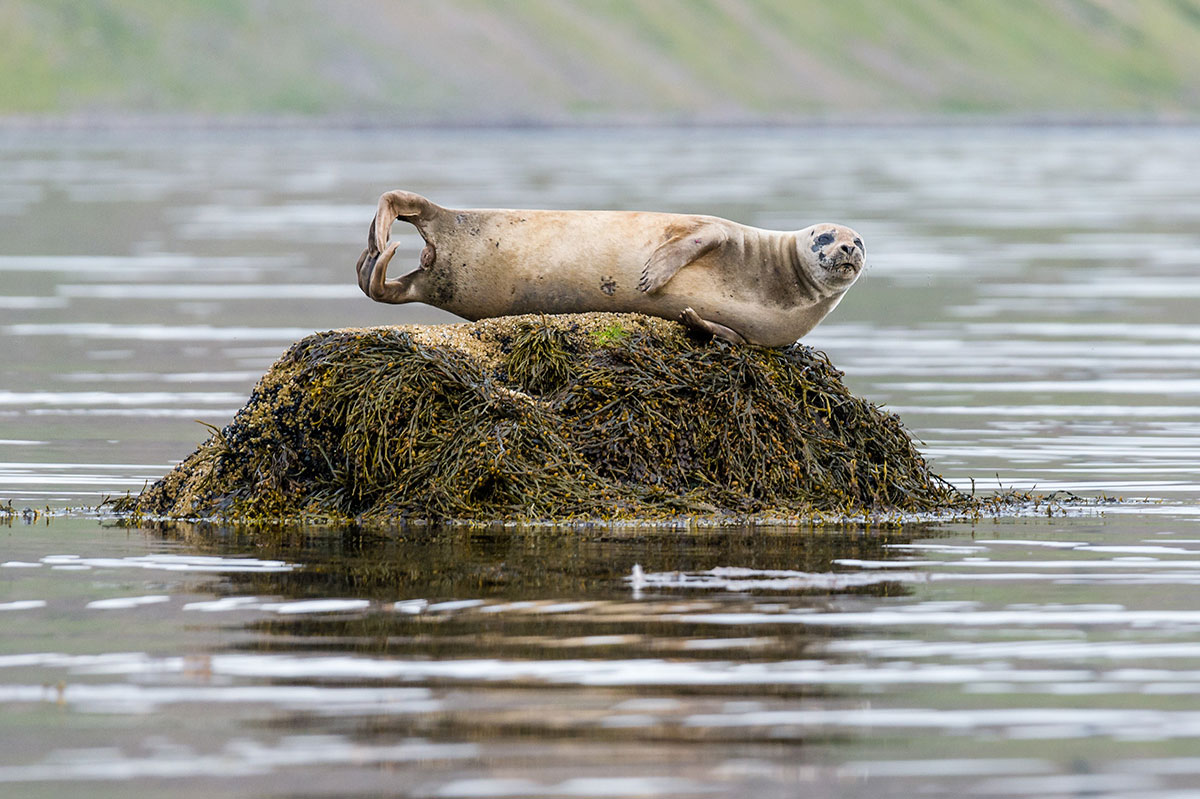
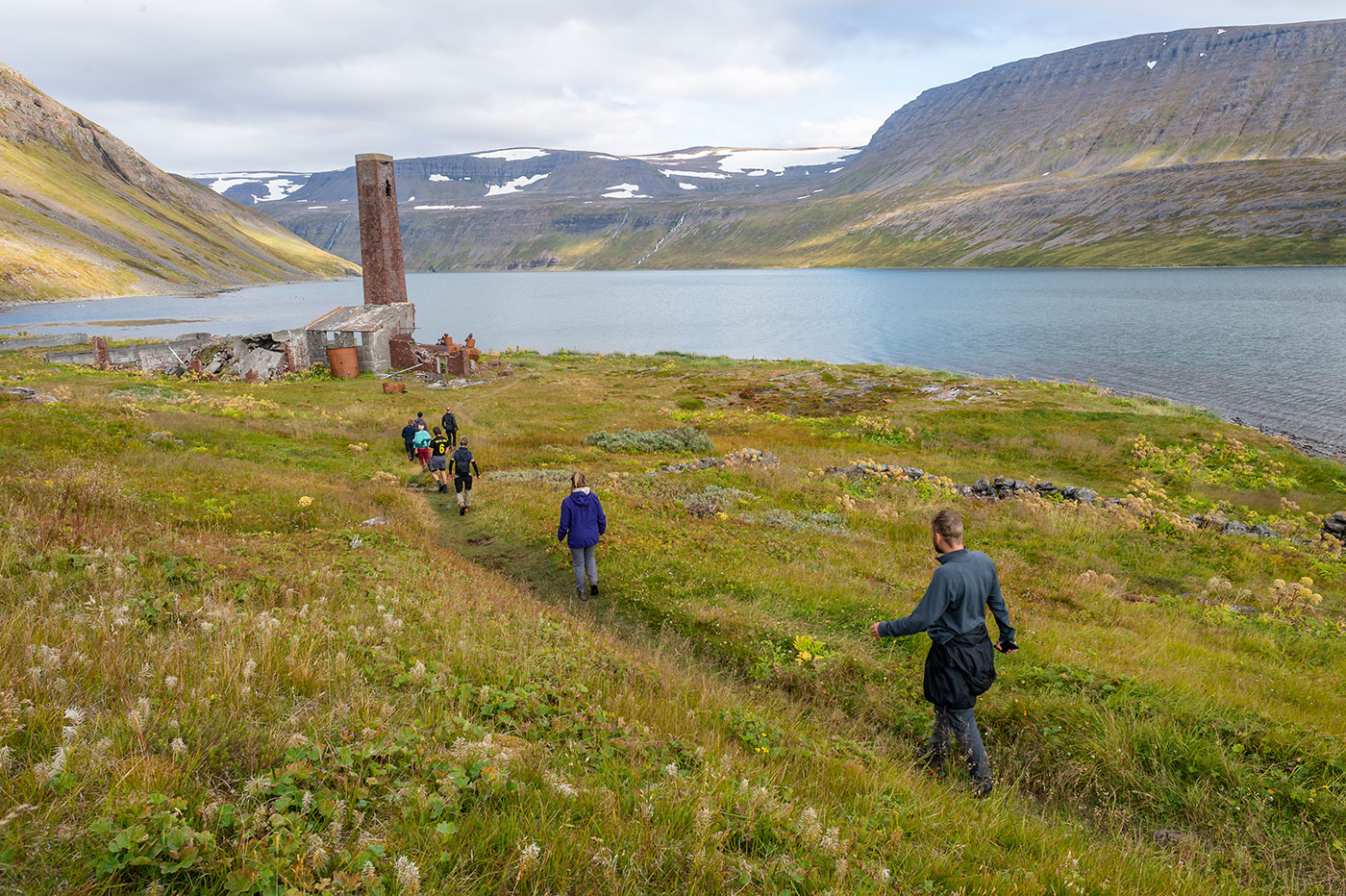
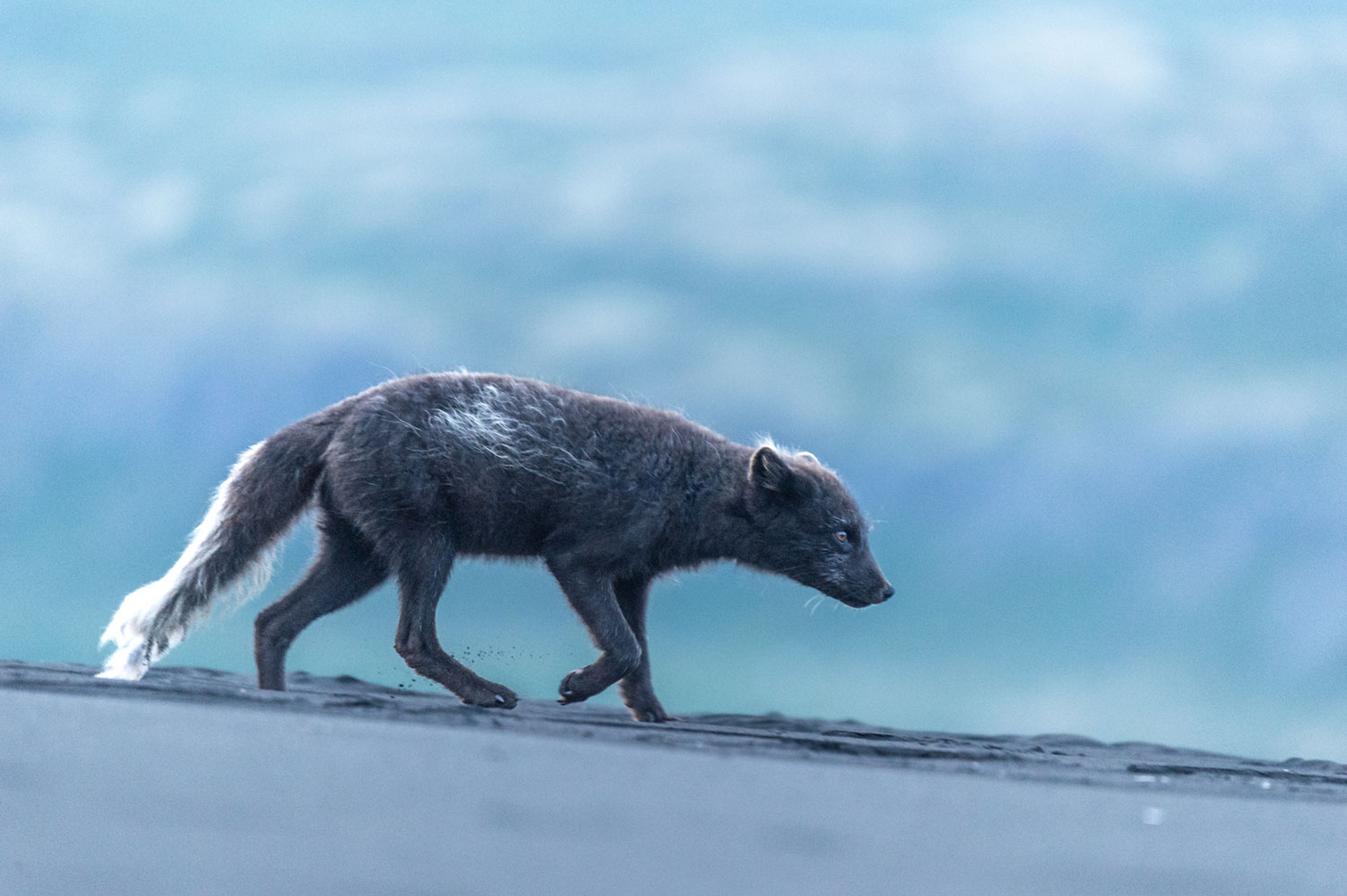
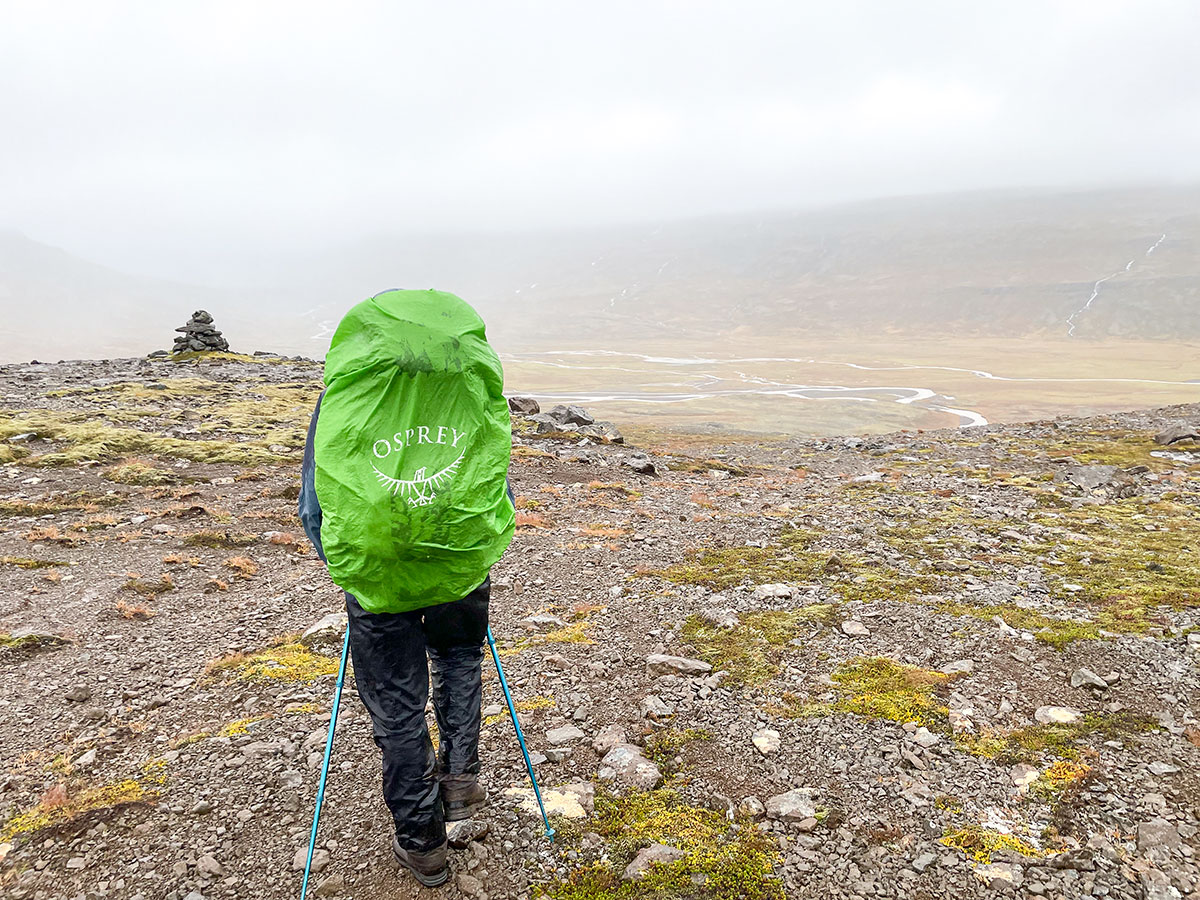
Sorry, the comment form is closed at this time.